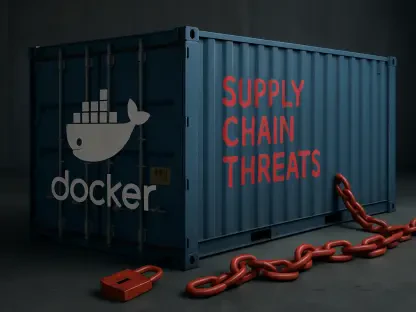The emergence of sophisticated cyber groups targeting AWS credentials and infrastructures has added a new layer of complexity to cloud security. One such group, known as EC2 Grouper, has caught the attention of FortiGuard Labs’ researchers due to their unique modus operandi. By consistently using specific AWS tools and adopting unique security group naming conventions, the group’s activities have raised concerns among cybersecurity experts. They typically acquire credentials from code repositories linked to valid accounts and rely on APIs for tasks like reconnaissance and resource creation, eschewing manual approaches.
Detecting the activities of EC2 Grouper presents a significant challenge because indicators such as naming conventions and user agents are notoriously unreliable given the ease with which attackers can alter these details. The group further complicates detection by avoiding direct actions such as configuring inbound access, making it difficult for traditional detection methods to identify their activities. Researchers noted an absence of calls to AuthorizeSecurityGroupIngress, which would typically signal direct access modifications, but did detect activity related to CreateInternetGateway and CreateVpc, suggesting alternative methods for remote access.
FortiGuard Labs’ findings underscore a worrying trend in the increasing exploitation of AWS infrastructure by hacker groups. In the past, groups like ShinyHunters and Nemesis Group have targeted misconfigured AWS S3 Buckets, but EC2 Grouper’s methodology appears to be more sophisticated. The group leverages AWS tools like PowerShell and employs unique user agent strings, with a primary focus on obtaining credentials from code repositories. This move from traditional methods to more complex, targeted attacks has heightened the need for advanced detection and defense strategies.
The Complexity of Detecting EC2 Grouper’s Activities
The research conducted by FortiGuard Labs highlighted the intricate nature of EC2 Grouper’s operations, making detection particularly difficult. Traditional indicators, once deemed reliable such as naming conventions of security groups or user agents, have been rendered unreliable due to the group’s sophisticated tactics. Attackers can easily modify these details, obfuscating their tracks and making it immensely challenging for cybersecurity teams to detect their presence. With the group’s avoidance of direct actions like configuring inbound access, detection becomes even more complex as common signals typically associated with threats are missing.
One of the more notable observations from FortiGuard Labs was that there were no calls to AuthorizeSecurityGroupIngress, a typical indicator of direct access configuration. Instead, activity was observed related to CreateInternetGateway and CreateVpc, hinting at EC2 Grouper’s use of alternative methods for establishing remote access. These findings suggest a more nuanced approach where the group leverages AWS’s own infrastructure in ways that standard monitoring tools might not immediately flag, thus slipping under the radar of typical detection systems. The absence of direct action indicators and reliance on subtle, infrastructure-based activities complicates the efforts to identify and mitigate their operations.
Advanced Techniques and Recommendations for Mitigating Risks
To combat such sophisticated threats, researchers emphasize the need for using advanced techniques and tools like Cloud Security Posture Management (CSPM) to monitor and assess cloud environments continuously. CSPM solutions provide consistent vigilance over configurations and security status, offering a proactive approach to identifying potential vulnerabilities before they can be exploited. Implementing anomaly detection techniques to spot unusual API activities, resource creation, or data exfiltration is also recommended to bolster defenses against such advanced threats. These techniques enable early identification of activities that deviate from the norm, allowing for a quicker response to potential breaches.
Another critical recommendation is maintaining vigilance for suspicious activities associated with legitimate secret scanning services. EC2 Grouper has been known to target credentials from code repositories, so monitoring these repositories closely can help identify potential compromises. By continuously scanning for unusual accesses and unexpected changes, security teams can catch early signs of credential theft. Combining these advanced techniques with traditional security measures, while focusing on API usage patterns and credential management, creates a more comprehensive defense strategy. This holistic approach, prioritizing continuous monitoring and anomaly detection, is essential in establishing a robust defense against sophisticated groups like EC2 Grouper.
Building a Robust Defense Against Cloud-Based Threats
The rise of advanced cyber groups targeting AWS credentials and infrastructure has significantly complicated cloud security. One such group, EC2 Grouper, has become a focal point for FortiGuard Labs’ researchers due to their distinctive strategies. EC2 Grouper uses specific AWS tools and unique naming conventions for security groups, which has alarmed cybersecurity professionals. They typically acquire credentials from code repositories linked to valid accounts and use APIs for reconnaissance and resource creation, avoiding manual methods.
Detecting EC2 Grouper’s activities is particularly challenging. Indicators like naming conventions and user agents are unreliable because attackers can easily change these details. The group avoids direct actions like configuring inbound access, making traditional detection methods ineffective. Researchers did not observe calls to AuthorizeSecurityGroupIngress, which signal access modifications, but did find activity related to CreateInternetGateway and CreateVpc, suggesting alternative remote access methods.
FortiGuard Labs’ research highlights a troubling increase in AWS infrastructure exploitation by hacker groups. While groups like ShinyHunters and Nemesis Group have targeted misconfigured AWS S3 Buckets, EC2 Grouper’s approach is more advanced. They use tools like PowerShell and unique user agent strings, primarily focusing on obtaining credentials from code repositories. This shift from conventional attacks to more sophisticated, targeted methods underscores the need for advanced detection and defense strategies.









